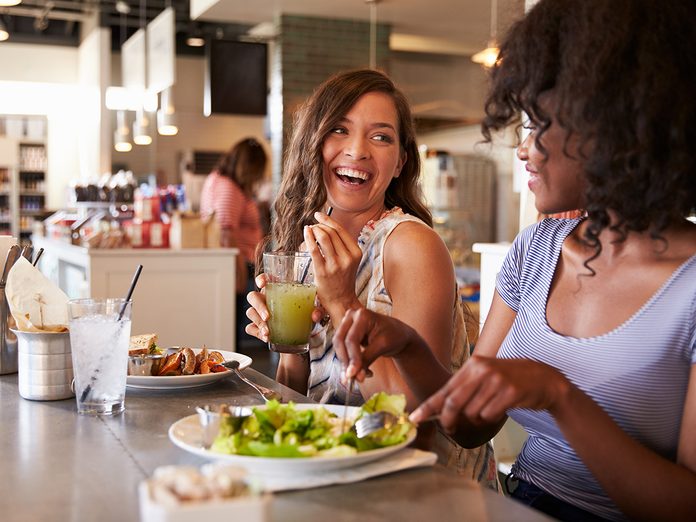
How to Eat Less (While Still Feeling Satiated)
Switch Hands
If you’re a righty, put your fork or spoon in your left hand for a change. You’ll have to work a little harder on hand-mouth coordination, which will shift you out of autopilot or mindless eating (i.e., inhaling your lunch in mere minutes) into mindful eating which involves eating consciously, staying more focused during mealtime, and ultimately eating less while still feeling satisfied.
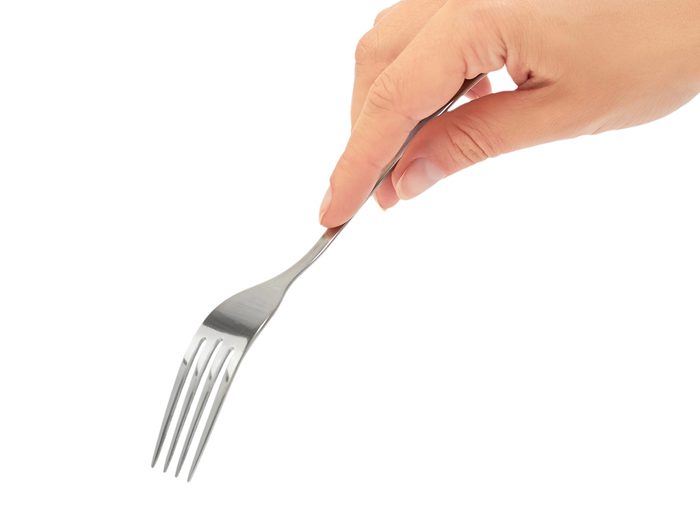
Turn Your Fork Upside Down
Do you stab or scoop with your fork? North Americans tend to scoop up food, which can promote mindless eating; British people, on the other hand, keep their forks turned down and stab food to pick it up.
Another utensil trick: Pick smaller ones. A baby spoon or shrimp fork will slow down your eating pace and help you take smaller bites.
Discover more tricks to lose weight without a lick of exercise.
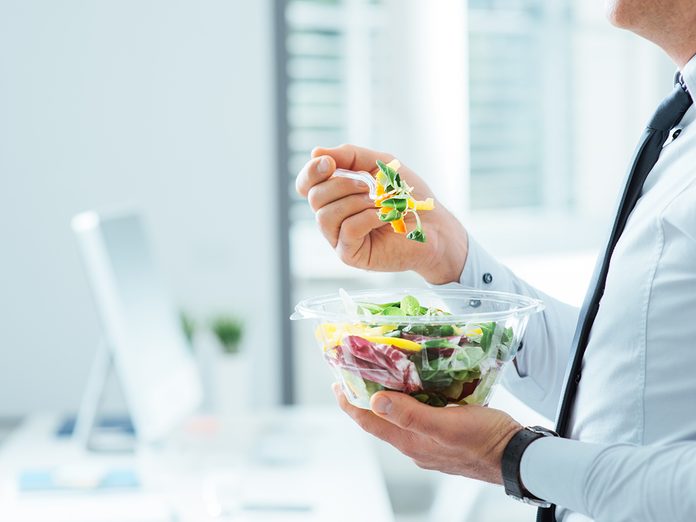
Take One Bite at a Time
We’ve all scarfed down food too quickly while trying to rush-eat before a meeting or finish breakfast on a hectic weekday. You will eat more mindfully if you take small bites, chew them thoroughly and finish one bite before moving on to the next. Don’t let yourself go for another bite until your mouth is completely empty of the current one.
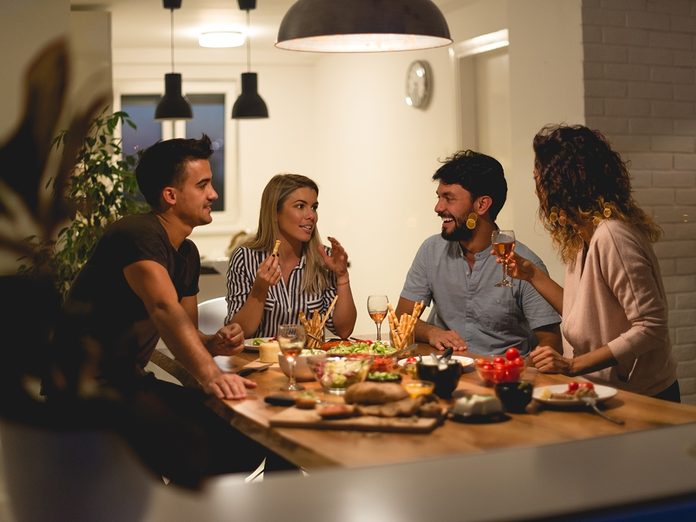
Institute an Intermission
Deliberately slow down a meal by setting a break, like at a play between acts. Use the intermission to take a drink, put down your fork to tell a story, or just get up stretch your legs.
Find out why intuitive eating is being called the “anti-diet.”
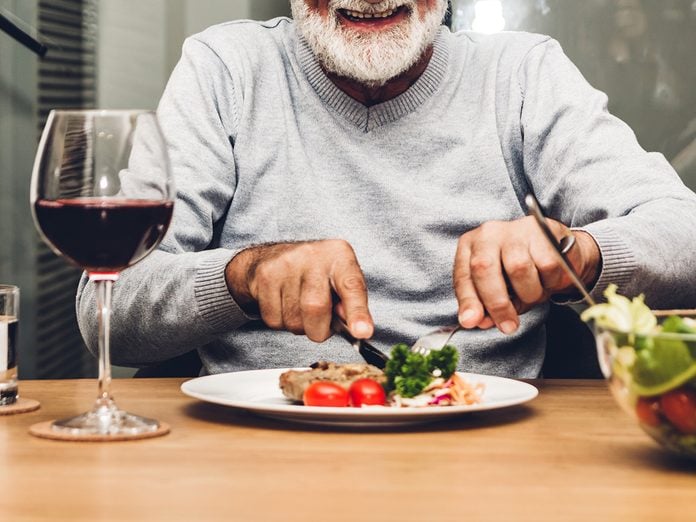
Pace Yourself
Are you always the first member of the Clean Plate Club? Consider it a sign you’re chowing too quickly. Use your fellow diners to help set a pace—observe who is eating fastest and slowest, and aim to eat on par or slower than the slowest eater at the table.
Here are 10 “bad” foods you can stop demonizing.
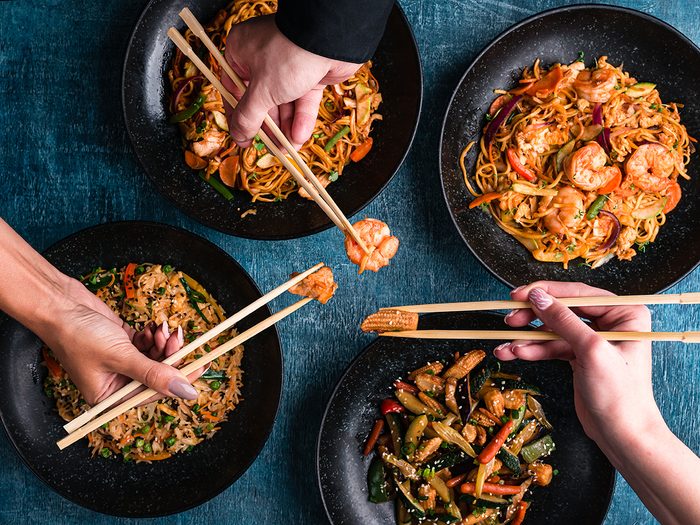
Try Chopsticks
They’re not just for sushi! Use this Asian staple instead of a fork and knife. Challenging the way you usually eat will help you take smaller portions, eat more slowly, and look at your food more closely.
Here’s what can happen when you start meditating every day.
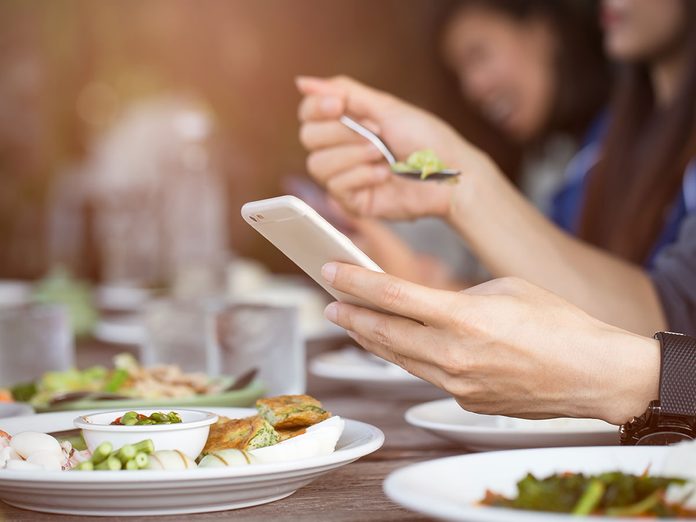
Eat, Don’t Multitask
If it’s hard to imagine eating lunch away from your desk or dinner not in front of the TV, challenge yourself to eat without distractions—and your waistline may thank you. Research shows that eating in front of the TV increases food intake by 14 per cent; talking to a friend while you chow can boost consumption by 18 per cent. Explains Albers: Doing two things at once inhibits concentration and awareness.
These mindful shopping tips can save you money (and even make you happier).
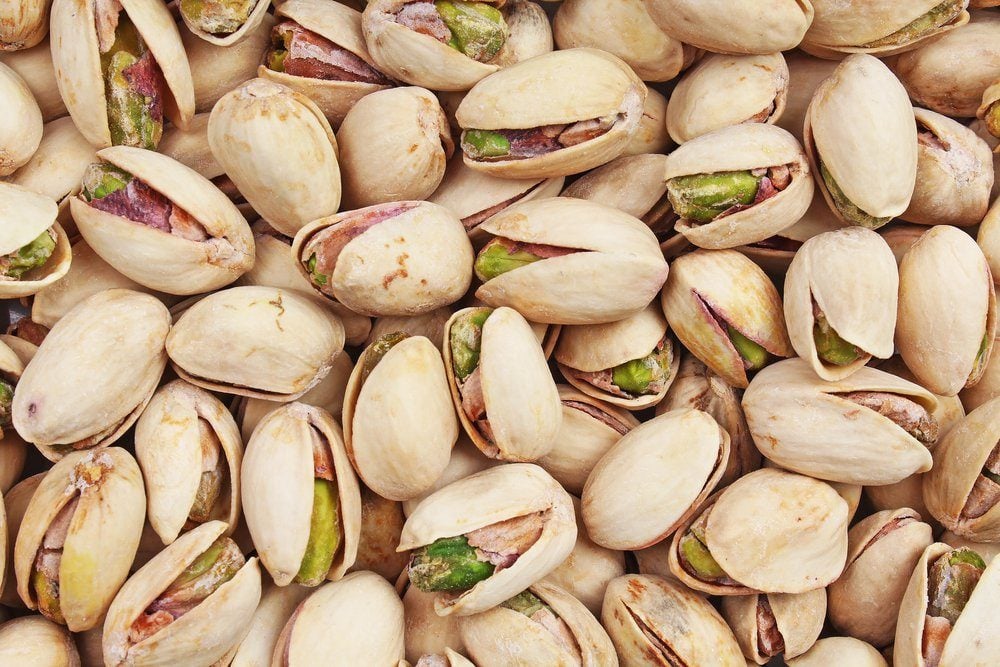
Take Advantage of the Pistachio Effect
Working harder for your food helps you eat less of it. That’s what Eastern Illinois University researchers found when they gave two groups of study participants pistachio nuts; one got the nuts already shelled and the other had to de-shell them. The former consumed 211 calories on average; the latter had only 125 calories—and both groups rated their fullness and satisfaction the same.
Another study from the same research centre found that using the shells as “evidence” of your eating habits can also help you cut back. People who kept their shells in sight while they continued to eat consumed 216 calories on average; those who threw them out as they ate consumed 264 calories. The same principle applies to cups, candy wrappers, chicken bones, etc.
Don’t miss these important considerations regarding weight loss for diabetics.

Wake Up, Smell Coffee
Before you dig into breakfast, have a mindful moment with a cup of coffee (herbal tea works well too). Sit down and pour a steaming cup, then allow yourself to sniff the hot vapours (at a safe distance). Inhale deeply and savour the fragrant aroma, which can be very invigorating.
Here’s how to make your coffee habit even healthier.
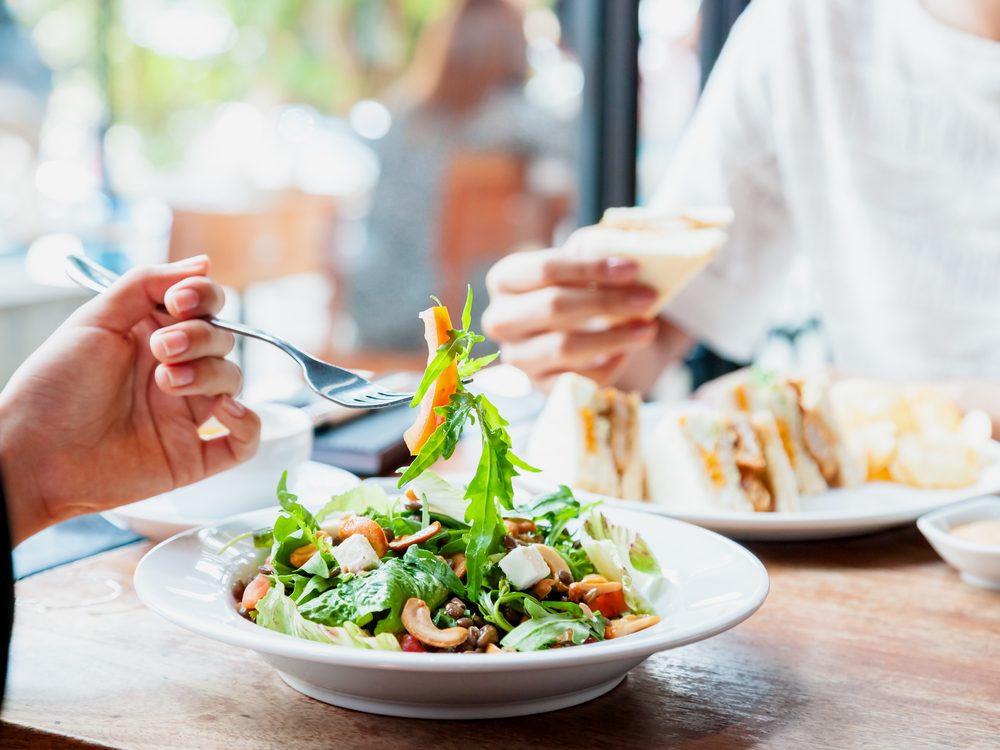
Study How You Finish a Meal
Do you use external or internal cues to wrap up mealtime? External cues are things like your server removes your plate, lunch hour is over, the bag of popcorn is empty. Internal cues are things like you feel full, you consider the portion size, you feel thirsty. Listen to internal cues to stop eating.
Here’s what happens to your body when you start drinking eight glasses of water a day.
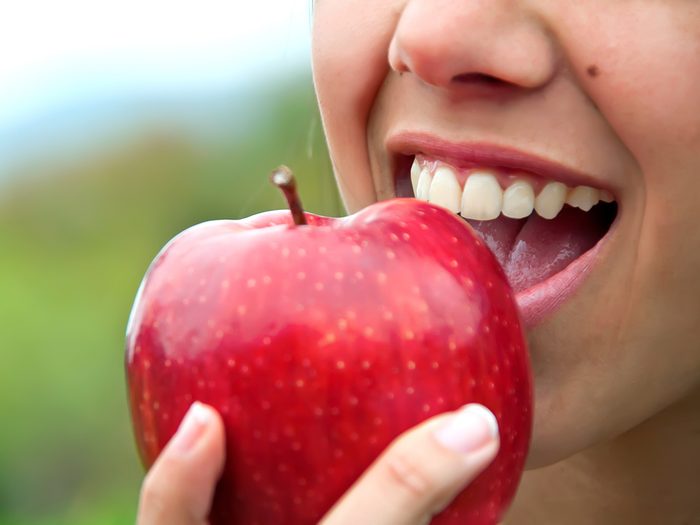
Crunch an Apple
One study found that eating an apple before lunch can cut how much you ultimately eat by 15 per cent, thanks to its filling fibre preventing you from overeating. Another fibre-rich fruit, like pears or berries, should work as well.
Check out the healthiest high-fibre foods worth adding to your diet.
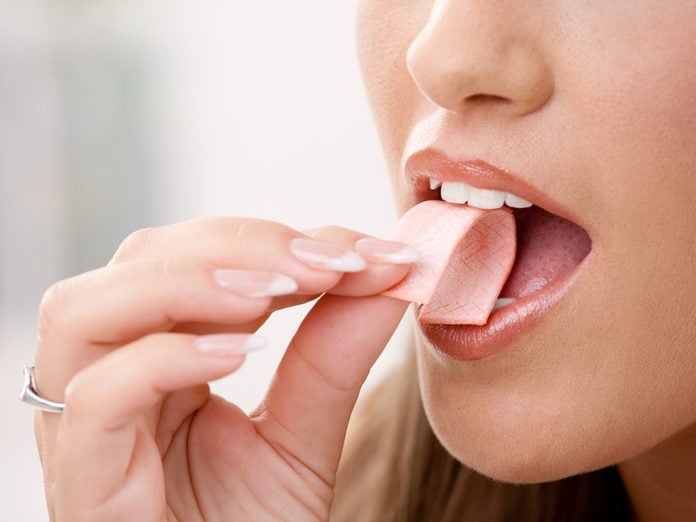
Chew Gum
Yep, gum can be good for you! One study found that that chewing gum for at least 45 minutes can reduce appetite, increase fullness, and make you feel less hungry for snacks. Next time a craving strikes, whip out a stick of gum instead and see if it passes.
Find out the healthiest snacks to eat before bed.
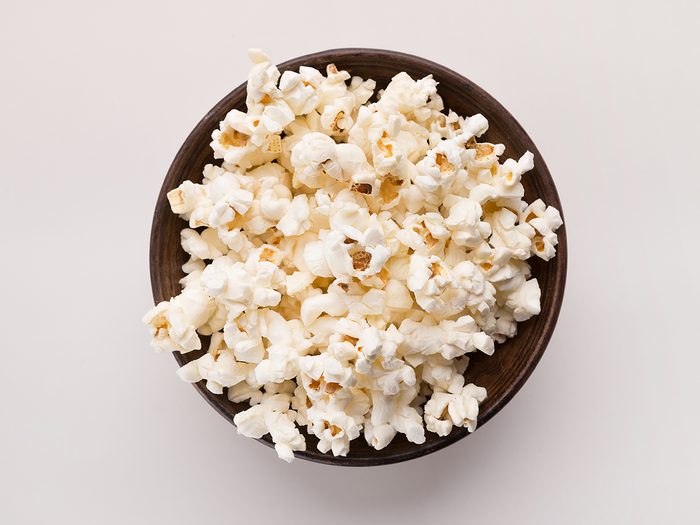
Snack Consistently
Make your snacking routine more mindful by designating a particular bowl as your “snack bowl.” Make it small, and use it for whatever you’re munching on. This will help you get used to eating the same amount of food.
Here’s why the body mass index isn’t the best measure of health.
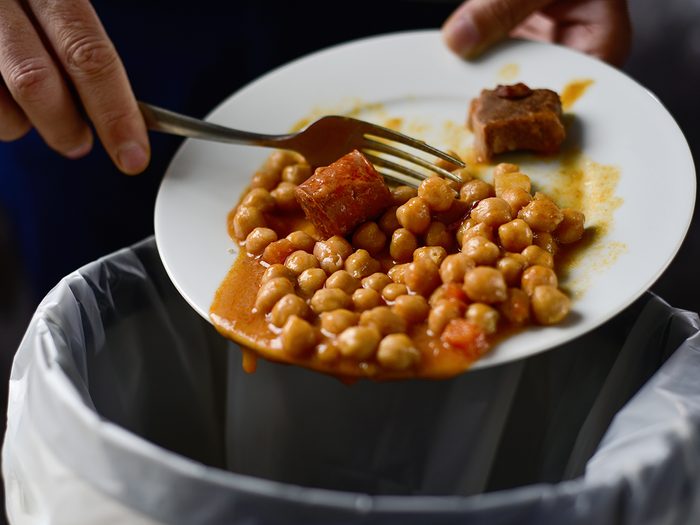
Get Smart About Leftovers
One of the worst times for mindless eating is right after dinner—because it becomes part of the clean-up ritual. (You tell yourself, “If I take one more bite of this garlic bread, I don’t have to put it in container or throw it away.”) Downsize your cooking so you’re less tempted to pick at leftovers, or commit to packing up leftovers right away.
Beware of the leftovers that can make you sick.
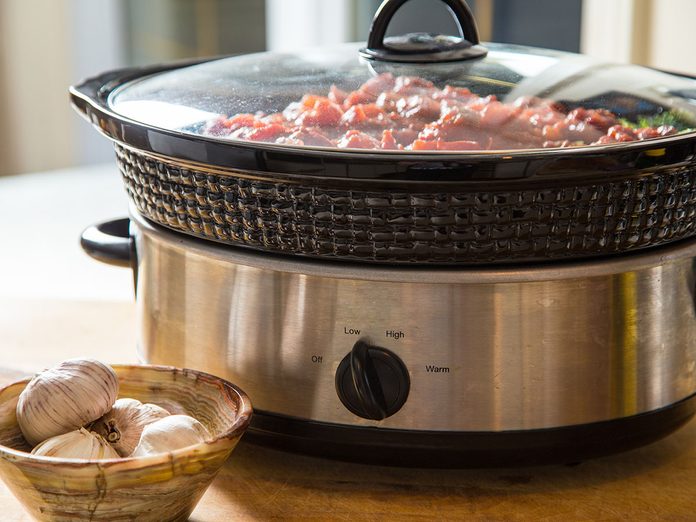
Use Your Slow Cooker
Another common time for mindless eating happens during the witching hour between work and dinner, when you’re tired and hungry and need to eat before your meal is ready. Use a slow cooker to have a healthy meal waiting for you and you’ll be less likely to graze on unhealthy or excess fare.
From Eating Mindfully, Second Edition, by Susan Albers, PsyD.
Now that you know how to eat less with these mindful eating tips, find out the foods everyone over 50 should be eating.